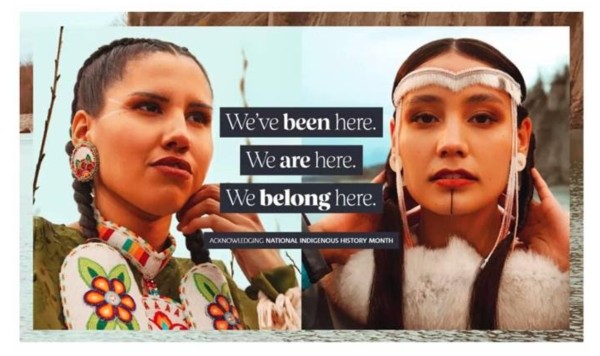
Native Americans and Canadians, as well as indigenous peoples across the world, are getting more political and cultural attention. As they justly deserve. What is coming to light in places such as Canada is the extreme historical degradation and abuse of indigenous peoples under a federal government.
This all comes in the wake of the remains of 215 native children discovered buried at the Kamloops Indian Residential School, one of many government-enforced residential schools meant to assimilate native children. Not a few weeks passed before an even larger burial site was discovered, containing the remains of over 600 children, all unmarked and unreported. What was a tragic but local disgrace is quickly turning into a national outrage.
But before you can properly engage in a discussion about these outrageous crimes, you must first try and understand what it means to be a First Nation person today. This is why I attended a series of lectures by Canadian natives: the first series about the ethos and working of a local health clinic, and the second about a short film on Native youth cultural heritage.
These lectures now mark the undeniable importance of technology in global discussion even in smaller, more marginal communities. More than anything these technologies are cheaper and more accessible than ever, and the software is affordable, if not free.

Logo for the Fraser Salish community’s Symposium. Reproduced with permission. Logo design by Celina Koops (@celinamedia)
The first series of lectures, taking place across two day was Strengthening the Circle: Fraser Salish Indigenous Health Research Symposium by BC SUPPORT Unit Fraser Centre. The Fraser Salish is a community of First Nation indigenous people from British Columbia, Canada, and the talks about health and wellbeing substantiate the plans of a community for years to come.
The lectures suggested that Indigenous peoples suffer from much greater risks of alcoholism, drug abuse and obesity compared to other communities. This may be due to a white Western culture of suppression and mockery, and as such Native acceptance therapy is even routinely offered.
Due to physical remoteness and/or financial struggles, communities may miss out on essential medication for disease like AIDS. Moreover a heinous medical past under the government means a powerful mistrust of the authorities still exists, even in respect to the Covid-19 vaccination.
The talks provided a very welcoming, inclusive environment, as there were non-binary persons present there working on the committee as well as in the audience. The classes also provided an opportunity to learn appropriate lexicon: those who identity as Native or Indigenous due to their ancestry, whatever their complexion or genealogy, are known as First Nation persons. Peoples of non-Indigenous descent are known as Settler persons.
Another lecture I attended was Indigenous History Month: A Discussion, presented by Sephora Canada (SEPHORA CANADA EVENTS) hosted by Anishinaabe activist and Canadian celebrity Sarain Fox, where she and two young Indigenous actors discussed a promotional video that was produced for Canada’s National Indigenous History Month Campaign.
They mentioned the importance of ritual prayer to the Creator: from smudging (the burning of sage grass or similar plants in prayer and meditation) to beading (the creation of jewellery and ritual clothing). They expressed how they have at times been made to feel ashamed of their long traditional braids and clothing when off ‘the Rez’ (Reservations) in cities or schools. Nonetheless they feel it is their responsibility to show others they do not need to feel ashamed of their non-white, non-Christian heritage.

Michelle and Shain, two young women who are the face of a short film celebrating Canadian First Nation culture.
(Image credits: News Wire, and CNW Group/Sephora Canada)
Students of American Literature, or anyone interested in postcolonialism ought to take advantage of the enormous range of indigenous lectures that are advertised on Eventbrite: June has been National Indigenous History Month for Canadians after all (whereas in the USA, Native American History Month is celebrated in November). Not to mention there is a wealth of Native authors, both old and new, as well as non-fiction books dedicated to the subject.
An Obvious Next Step: Why Latin American Authors should be included more on English Literature Syllabi
There has been a steadily increasing fascination in mainstream culture for Latin America. With the very recent mention of the upcoming Disney film, Encanto (Autumn 2021), this is a second time (after the 2017 Mexican tale Coco) that such a big budget and mainstream animation studio has dedicated itself to a minority culture in the USA.
In the world of politics, rising star Alexandria Ocasio-Cortez (‘AOC’), one of the most well-known Democrats in American politics, is deeply committed to the welfare of Latinx persons in her family homeland of Puerto Rico and the state of Americans of all ethnic descents. No longer just as a site of Cold-War drama as with the Cuban Missile Crisis, or colonial horrors under the Spanish or Portuguese, Latin American culture maintains the fertile potential to enrich any media it touches.
I attended Curator Talk with Marcela Guerrero by Artpace San Antonio where the Assistant Curator of Art, Guerrero, discussed her efforts to make an art gallery in Whitney, Texas more representative of the local Latinx population, which may account for up to 18% of the total US population, and similar efforts made nationwide.

In her talk, Gerrero mentioned David Alfaro Siqueiros’s Tropical America, an outdoor mural still on display in downtown Los Angeles. Latinx art, just like literature, provides a study of how cultural blending, though often mixed with trauma, brings artistic richness. A Latinx immigrant is depicted being crucified under an American Eagle: suggesting a Catholic faith, a Promethean sacrifice, and a cry for justice in an unfair America.
(Image credits: Michael Martinez, WordPress)
In literature, John Steinbeck – though lacking any direct ancestry with Latinx persons himself – knew about Mexican immigrants in his home of Salinas, California, and devoted the novella The Pearl to the formidable struggles of a young Mexican family in the face of poverty and desperation. His other varied writings Cup of Gold and The Log from the Sea of Cortez also explore the landscape of Mexico and Central America and prove the fertility of the landscape even to non-Latinx authors.
On an American Literature module, Latinx representation could include José Martí, who was a 19th century English-writing poet, journalist and political essayist based in New York but originating from Cuba, and is already included in the New York State Writers Hall of Fame. Potential 20th century Latin authors or critics include Gloria E. Anzaldúa, a queer feminist poet and critic from a Texan-Mexican immigrant family. 21st century novelist Christina Henríquez like Steinbeck focuses on the agricultural and labouring roles of the immigrant working class, but exchanging white Americans for Mexicans.
Norton Anthologies for students tend to prioritise white authors: in Norton Anthology of American Fiction, 1820-1865 ,Volume B (edited by Nina Baym and Robert S. Levine), only a single reference is made to a Latinx author in America, Lorenzo de Zavala (pg 1292), though admittedly space is dedicated to Native American and Black authors. The trend has been to dedicated separate anthologies to minorities, as for example in the Norton Anthology of Latino Literature editions.
Potentially any Latinx author could be proposed for an American literature course, though they would need to have been living at some point of time in America, and offer a text originally written in English, and there is surely no short supply of these.
We would be doing ourselves no favours if we were to remove famous white American authors and poets such as Washington Irving, Edgar Allan Poe or Emily Dickinson. Students deserve to know of the traditional literary and cultural canon, but an effort should still be made to include an example of the art of all cultures in America, particularly in the 21st century.